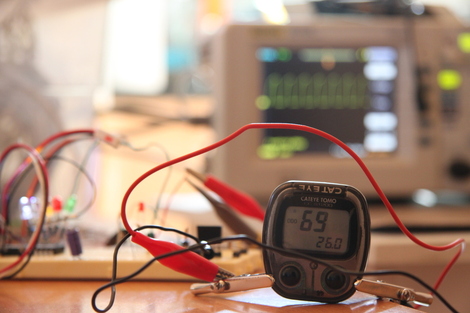
We do see hacking in mainstream print media from time to time, but you know the movement must be gathering steam when a collection of hacks gets the cover story in a local paper. This week’s issue of The Isthmus – the premiere free newspaper here in Madison, WI – features the local hackerspace and a handful of green hacks.
The man seen riding the pedal-powered plow above is [Kevin Blake], a mechanical engineer for Trek Bicycles which is headquartered in Waterloo, WI. He built the rig with the chassis of a riding lawnmower, adding shovel blades in a V-shape on the front, with cranks and other parts salvaged from bicycles.
The article goes on to feature the local hackerspace, Sector67, by interviewing its founder, [Chris Meyer]. The paper tracked down some other local hackers (and Sector67 members) who have been prototyping wind turbines.
The largest feature in the story goes to [Ben Nelson’s] Geo Metro electric vehicle conversion. The self-employed video producer picked up the diminutive car for about $500 and dropped in a forklift motor which he picked up at a garage sale ($50 + $50 for new brushes makes for a steal at $100). But here’s the best part of the project: after ripping out the unneeded parts for the car he sold them for $550. Anyway, all said and done he’s got about $1300 invested in the project and now has an all-electric car that gets up to 45 mph with a range of twenty miles in between charges. Maybe a big tail cone would help extend that reach.
This is the most interesting stuff we’ve read in the newspaper in years. Maybe you should contact your local journalists for a feature in your area? If they’re not receptive, don’t fret… we’re always looking for great builds to feature here at Hackaday.





















